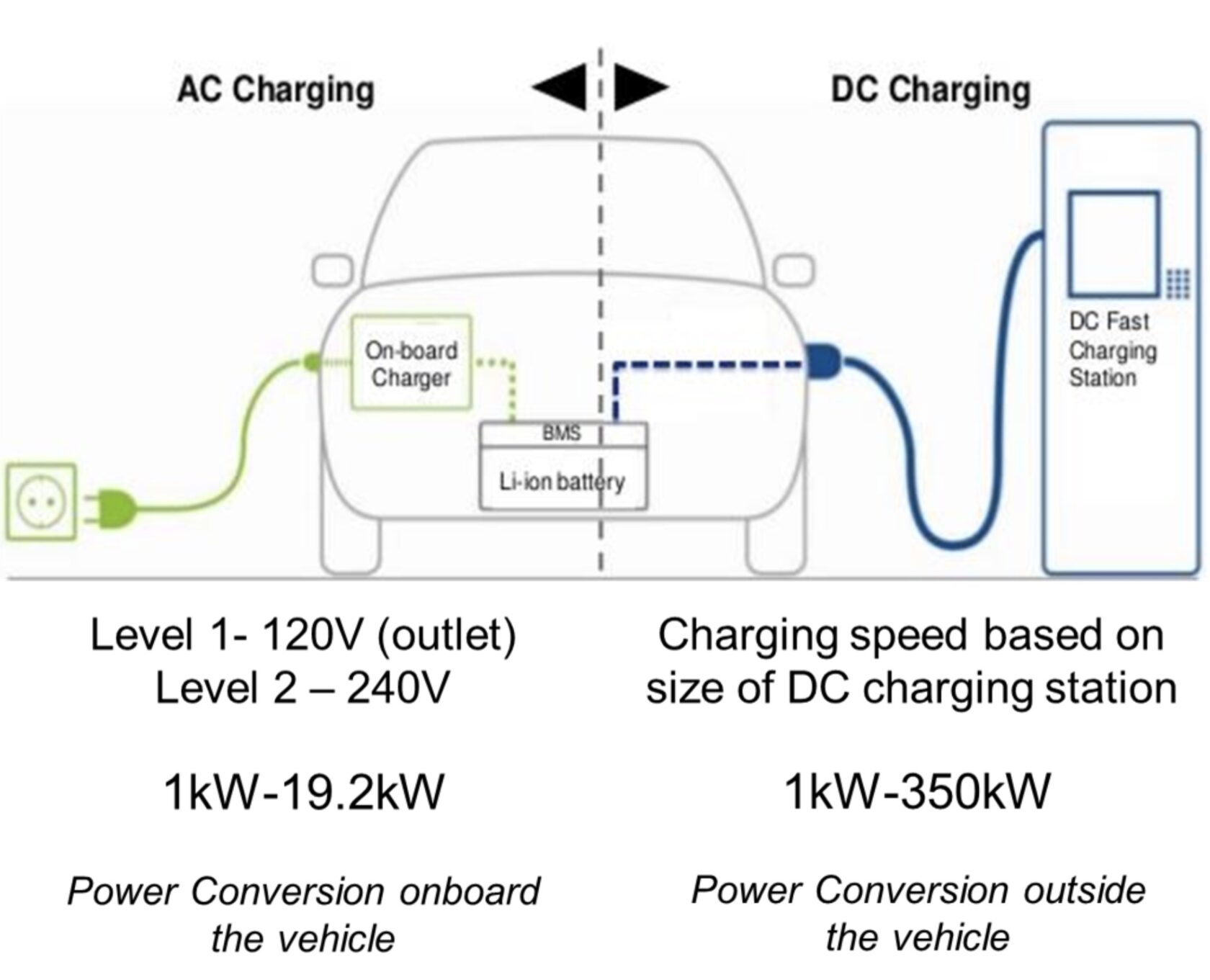To power an electric vehicle, fleet owners must choose whether to install DC or AC chargers. For context, the power coming from your electric utility is AC while the battery in an electric car requires DC current (this article from Renault explains the process very well). To address this problem, electric vehicles come with an on-board charger that can convert AC to DC.

Fleet owners who operate electric vehicles can power them using AC or DC chargers. DC chargers tend to be more expensive than AC chargers because they require inverters and additional equipment to convert power from the grid to DC before sending it to the vehicle. That being said, DC chargers can be sized to supply up to 15x more power than what AC chargers are designed to supply. The amount of power that a charger supplies to a vehicle is measured in kilowatts (kW).
When purchasing EV charging equipment, fleet owners need to consider three important factors:
- How much electricity will the vehicle consume during a typical duty cycle?
- How much time does the vehicle have to recharge its battery when not in use?
- What is the maximum AC power rating for the onboard charger on the electric vehicle?
In this article, we focus on the most common use case for most fleets but if you need help making EV charging decisions, feel free to get in touch with our team or read some of the helpful resources created by SCE.
Electric vehicles in fleets tend to consume between 25 to 150 kilowatt hours (kWh) during a typical driving cycle, the amount depends on the size of the vehicle and the driving conditions. Most fleets also tend to charge overnight when electricity is cheapest and spend up to 16 hours parked. This means that a fleet owner that parks its vehicles for 8 hours overnight would need to charge them at a power rate that ranges from 3 kW to 20 kW. For most of the light and medium duty fleet applications we’ve encountered (including school buses) installing a charger with a higher power rating than 20 kW is unnecessary.
Fleet owners who install a DC fast charger for overnight applications will likely choose a charger rated for 25 kW that will cost up to $15,000 without including the cost of installation and power supply equipment. On the other hand, fleet owners who choose an AC charger spend less than $5,000 per unit.
Why we created an EPIC charger
Through the process of helping fleets electrify, the team at EPIC charging realized that fleet owners needed to have the flexibility of buying different types of chargers. At the same time, we also heard from many clients who were looking for affordable high power AC charging. Our solution was to create a hardware agnostic software platform that can be integrated with any charging infrastructure supplier, to offer and to launch epic chargers.
We’re excited to announce the launch of our EPIC80 and EPIC48 chargers that can supply power at 19.2kW and 11.5kW, respectively. Fleet owners who purchase an EPIC80 charger can save over $12,000 compared to clients who purchase a DC charger. Our chargers also qualify for rebates which can significantly reduce the cost of installation.
For more information on our EV charging solutions, contact us.

